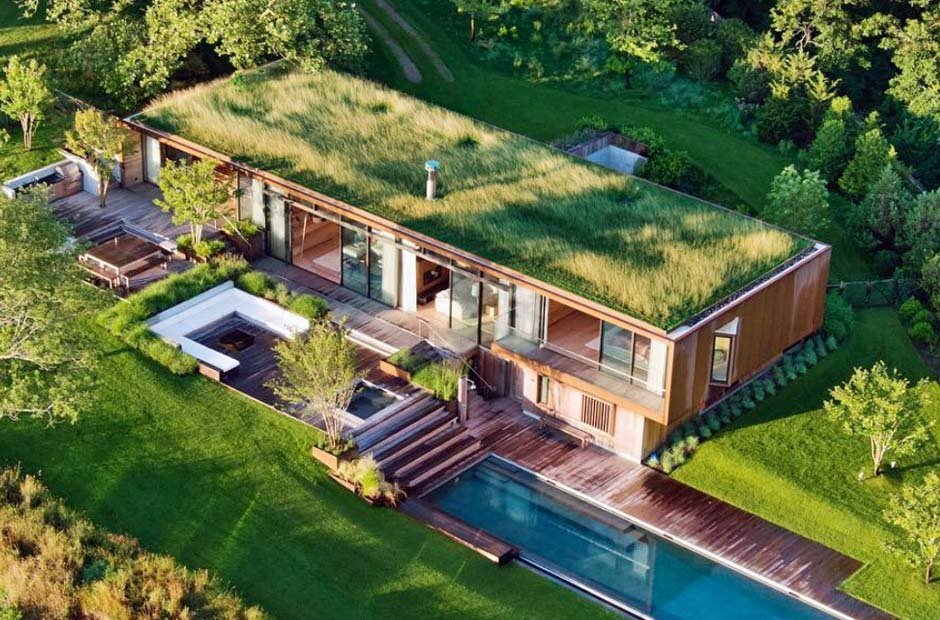Introduction to Eco-friendly Homes
Because of the growing significance of climate change, the construction industry is shifting towards sustainable options. Eco-friendly home construction benefits the environment and offers a healthier living space.
This guide will explore various aspects of sustainable home construction, from its benefits to the innovative technologies driving its future. We aim to provide insightful information to make informed decisions, whether you’re a builder, homeowner, or just curious about eco-friendly living. The significance of environmentally friendly homes is immeasurable, as they help decrease our carbon footprint and encourage a healthier way of living.
Benefits of Green Building
Green construction offers various advantages such as decreased energy usage, decreased utility costs, and a reduced carbon footprint. Green buildings enhance indoor air quality and promote occupant health, as stated by the Environmental Protection Agency (EPA). These buildings often utilize natural light and ventilation, creating a more pleasant living environment. For example, even assisted living apartments are seeing a surge in green building practices, ensuring a safer and more sustainable environment for all residents. Additionally, green buildings attract higher property values and can become a crucial selling point for environmentally-conscious buyers.
Environmental Impact
Green buildings are created with the intention of reducing waste and pollution. Using renewable resources and energy-efficient techniques, these homes can significantly lower greenhouse gas emissions. This eco-friendly approach helps the planet while also improving property values. Industry stakeholders must recognize the long-term environmental benefits of investing in green construction techniques.
Health and Well-being
Environmentally friendly houses are frequently built using materials that are not harmful, decreasing the chance of health problems resulting from toxic chemicals. Improved air quality and natural light contribute to the overall well-being of occupants, creating a healthier living space. This means fewer respiratory issues and a generally improved quality of life for families.
Sustainable Materials in Construction
Using sustainable materials is crucial for lowering the environmental impact of home construction. Materials such as bamboo, reclaimed wood, and recycled metal are increasingly gaining popularity in the building industry.
Bamboo
Bamboo is an abundant resource that grows quickly and needs very little water. It’s a strong material suitable for flooring, cabinetry, and structural elements. Its rapid growth rate makes it a highly efficient material that offers durability and flexibility in design.
Reclaimed Wood
Old buildings are deconstructed to salvage reclaimed wood, which is repurposed to preserve forests by reducing the need for new lumber. It adds a unique, rustic aesthetic to homes while being environmentally friendly. Reclaimed wood also carries a history and character that new materials can’t replicate, adding charm and sustainability to a home.
Recycled Metal
Steel and aluminum recycled metals have the potential to be utilized in a variety of construction elements. This practice reduces waste and the need for raw materials, contributing to a more sustainable building process. Recycled metals often come with the added benefit of being more resilient, providing lasting benefits to the home’s overall structure.
Energy-Efficient Design Practices
Incorporating energy-efficient design practices like proper insulation, triple-glazed windows, and solar panels can significantly reduce a home’s energy needs. For more tips on energy efficiency, check out Energy Saver. These design practices lower energy bills and create a more comfortable living environment.
Insulation
High-quality insulation assists in maintaining warmth in homes in winter and keeping them cool in summer, reducing the need for heating and cooling systems. This saves energy and leads to substantial cost reductions. Poor insulation can lead to fluctuating indoor temperatures and higher energy consumption.
Triple-Glazed Windows
Triple-glazed windows offer better insulation than traditional double-glazed windows. They help maintain indoor temperatures and reduce noise pollution, enhancing the overall livability of the home. This is especially advantageous in cities where noise and energy efficiency are important.
Solar Panels
Solar panels collect sustainable energy from the sun, creating a clean and renewable power supply. They have the ability to greatly decrease dependence on grid electricity and reduce utility costs. Moreover, there are frequently government incentives and rebates available for solar panels that can assist in reducing the upfront installation expenses.
Innovative Technologies
Technological advancements like smart home systems and high-efficiency HVAC systems are revolutionizing eco-friendly home construction. These technologies enhance comfort and promote better energy management.
Smart Home Systems
Smart home technology enables homeowners to remotely manage lighting, heating, and cooling, in order to maximize energy efficiency. These systems can also help in understanding energy usage trends, which can pinpoint areas that need enhancement. Smart thermostats, for instance, learn user behaviors and adjust settings to maximize efficiency.
High-Efficiency HVAC Systems
High-efficiency HVAC systems are designed to provide maximum comfort with minimal energy use. They utilize advanced technology to regulate temperatures and improve air quality, resulting in a healthier home environment. Many times, these systems are equipped with diagnostic tools that warn homeowners about possible problems before they escalate.
Case Studies and Real-Life Examples
Examining real-life examples can provide valuable insights. Notable projects include sustainable developments in cities like Portland and Austin, leading the way in eco-friendly building practices. These cities have put in place measures and rewards to promote eco-friendly building, leading to many prosperous projects that can be emulated by others. For example, Austin’s Energy Green Building Program has pioneered stringent standards that have led to multiple high-performance builds.
Challenges and Solutions
While challenges include higher initial costs and regulatory hurdles, solutions like tax incentives and grants can make eco-friendly homes more accessible. Governments and organizations are acknowledging more and more the significance of sustainable building and are providing different types of assistance to promote its implementation.
Initial Costs
One of the primary challenges is the higher initial cost of eco-friendly building materials and technologies. However, long-term savings on energy bills and maintenance expenses offset this, making it a worthwhile investment. Moreover, the resale value of green homes tends to be higher, providing financial benefits in the long run.
Regulatory Hurdles
Regulatory hurdles can also pose challenges, as building codes and standards for green construction are still evolving. Staying informed about local regulations and working with knowledgeable professionals can help navigate these challenges. Many municipalities also update their codes to support sustainable practices, making future developments easier.
Future Trends in Eco-friendly Construction
The future of eco-friendly home construction looks promising, with trends like green roofs, passive houses, and net-zero energy buildings gaining traction. Staying informed about these trends can help builders and homeowners make better choices.
Green Roofs
Vegetation-covered green roofs offer numerous benefits, including improved insulation, reduced stormwater runoff, and enhanced urban biodiversity. They can also provide a pleasant outdoor space for residents. Green roofs help decrease the urban heat island effect, creating more pleasant and comfortable living environments in cities.
Passive Houses
Passive houses are designed to maintain comfortable temperatures with minimal energy use. They achieve this through high insulation levels, airtight construction, and strategic placement of windows and doors. Passive house standards are increasingly recognized worldwide as the benchmark for energy-efficient home design.
Net-Zero Energy Buildings
Thanks to renewable energy sources like solar panels, net-zero-energy buildings produce as much energy as they consume. These buildings represent the pinnacle of sustainable construction, offering a glimpse into the future of eco-friendly living. Net-zero-energy buildings aim to eliminate the building sector’s carbon footprint, one of the most significant contributors to global emissions.
















